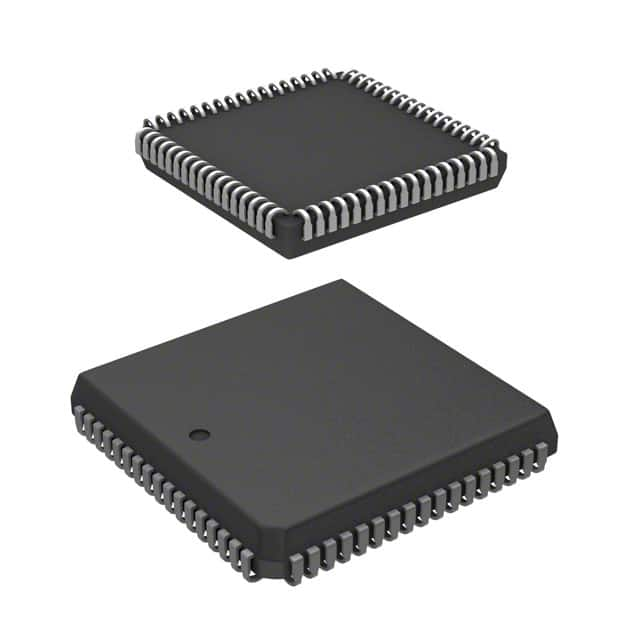Siehe Spezifikationen für Produktdetails.

Z16F2810VH20EG
Product Overview
Category
Z16F2810VH20EG belongs to the category of microcontrollers.
Use
This microcontroller is commonly used in various electronic devices and systems for controlling and processing data.
Characteristics
- High-performance microcontroller with advanced features
- Low power consumption
- Compact size
- Wide operating voltage range
- Robust design for reliable operation
Package
Z16F2810VH20EG is available in a compact package, suitable for surface mount technology (SMT) assembly.
Essence
The essence of Z16F2810VH20EG lies in its ability to provide efficient control and processing capabilities in a small form factor.
Packaging/Quantity
This microcontroller is typically packaged in reels or trays, with quantities varying based on customer requirements.
Specifications
- Architecture: 16-bit
- Clock Speed: 20 MHz
- Flash Memory: 128 KB
- RAM: 8 KB
- Operating Voltage: 2.7V - 5.5V
- I/O Pins: 32
- Communication Interfaces: UART, SPI, I2C
- ADC Channels: 8
- Timers: 4
- Operating Temperature Range: -40°C to +85°C
Detailed Pin Configuration
The Z16F2810VH20EG microcontroller has a total of 32 pins. The pin configuration is as follows:
- VDD - Power supply voltage
- GND - Ground
- P0.0 - General-purpose I/O pin
- P0.1 - General-purpose I/O pin
- P0.2 - General-purpose I/O pin
- P0.3 - General-purpose I/O pin
- P0.4 - General-purpose I/O pin
- P0.5 - General-purpose I/O pin
- P0.6 - General-purpose I/O pin
- P0.7 - General-purpose I/O pin
- P1.0 - General-purpose I/O pin
- P1.1 - General-purpose I/O pin
- P1.2 - General-purpose I/O pin
- P1.3 - General-purpose I/O pin
- P1.4 - General-purpose I/O pin
- P1.5 - General-purpose I/O pin
- P1.6 - General-purpose I/O pin
- P1.7 - General-purpose I/O pin
- P2.0 - General-purpose I/O pin
- P2.1 - General-purpose I/O pin
- P2.2 - General-purpose I/O pin
- P2.3 - General-purpose I/O pin
- P2.4 - General-purpose I/O pin
- P2.5 - General-purpose I/O pin
- P2.6 - General-purpose I/O pin
- P2.7 - General-purpose I/O pin
- RESET - Reset pin
- XTAL1 - Crystal oscillator input
- XTAL2 - Crystal oscillator output
- VREF - Reference voltage for ADC
- AVSS - Analog ground
- AVDD - Analog power supply
Functional Features
- High-speed processing capabilities
- Multiple communication interfaces for data exchange
- Built-in analog-to-digital converter (ADC)
- Timers for precise timing control
- Interrupt handling mechanism for efficient event-driven programming
- Power-saving modes for low-power applications
- On-chip debugging support for easy development and troubleshooting
Advantages and Disadvantages
Advantages
- High-performance and efficient processing capabilities
- Compact size for space-constrained applications
- Wide operating voltage range allows flexibility in power supply options
- Robust design ensures reliable operation in various environments
Disadvantages
- Limited flash memory and RAM capacity compared to some other microcontrollers
- Relatively higher cost compared to lower-end microcontrollers
Working Principles
Z16F2810VH20EG operates based on the principles of digital logic and microcontroller architecture. It executes instructions stored in its memory, interacts with external devices through input/output pins, and performs various tasks based on programmed algorithms.
Detailed Application Field Plans
Z16F2810VH20EG finds applications in a wide range of fields, including but not limited to: - Industrial automation - Consumer electronics - Automotive systems - Medical devices - Internet of Things (IoT) devices - Robotics
Detailed and Complete Alternative Models
Some alternative models that offer similar functionality to Z16F2810VH20EG include: - Z16F2811VH20EG - Z16F2812VH20EG - Z16
Listen Sie 10 häufige Fragen und Antworten im Zusammenhang mit der Anwendung von Z16F2810VH20EG in technischen Lösungen auf
Sure! Here are 10 common questions and answers related to the application of Z16F2810VH20EG in technical solutions:
Q: What is Z16F2810VH20EG? A: Z16F2810VH20EG is a microcontroller from ZiLOG's ZNEO family, designed for embedded applications.
Q: What are the key features of Z16F2810VH20EG? A: Some key features include a 16-bit CPU core, 128KB flash memory, 8KB RAM, multiple communication interfaces, and analog peripherals.
Q: What kind of technical solutions can Z16F2810VH20EG be used for? A: Z16F2810VH20EG can be used in various applications such as industrial automation, motor control, power management, and IoT devices.
Q: How does Z16F2810VH20EG support industrial automation? A: It provides features like PWM outputs, ADC inputs, UART, SPI, I2C, and timers that enable control and communication in industrial automation systems.
Q: Can Z16F2810VH20EG handle motor control applications? A: Yes, it has dedicated PWM channels, encoder inputs, and other peripherals that make it suitable for motor control applications.
Q: Does Z16F2810VH20EG support power management functions? A: Yes, it offers features like power-saving modes, voltage regulators, and analog comparators that aid in power management applications.
Q: Can Z16F2810VH20EG be used in IoT devices? A: Absolutely, it supports various communication protocols like UART, SPI, and I2C, making it suitable for IoT applications that require connectivity.
Q: What development tools are available for Z16F2810VH20EG? A: ZiLOG provides an integrated development environment (IDE) called ZDS II, which includes a compiler, debugger, and other useful tools.
Q: Are there any reference designs or evaluation boards available for Z16F2810VH20EG? A: Yes, ZiLOG offers evaluation boards and reference designs that help developers quickly prototype and evaluate their solutions.
Q: Where can I find documentation and technical support for Z16F2810VH20EG? A: You can find datasheets, application notes, user manuals, and other resources on ZiLOG's website. They also provide technical support through their online forums and customer service channels.
Please note that the answers provided here are general and may vary depending on specific requirements and use cases.

